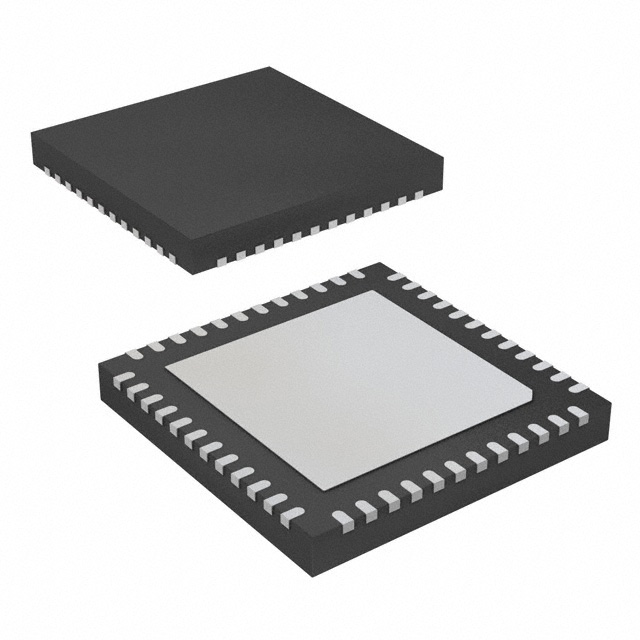ATSAM3S1AA-MUR
Product Overview
Category
The ATSAM3S1AA-MUR belongs to the category of microcontrollers.
Use
This microcontroller is commonly used in various electronic devices and systems for controlling and processing data.
Characteristics
- High-performance 32-bit ARM Cortex-M3 processor
- Low power consumption
- Wide operating voltage range
- Integrated peripherals for enhanced functionality
- Extensive connectivity options
- Robust security features
Package
The ATSAM3S1AA-MUR is available in a compact surface-mount package, making it suitable for space-constrained applications.
Essence
The essence of this microcontroller lies in its ability to provide efficient and reliable control and processing capabilities for electronic devices.
Packaging/Quantity
The ATSAM3S1AA-MUR is typically packaged in reels or trays, with varying quantities depending on the manufacturer's specifications.
Specifications
- Microcontroller Architecture: ARM Cortex-M3
- Clock Speed: Up to 64 MHz
- Flash Memory: 64 KB
- RAM: 16 KB
- Operating Voltage Range: 1.62V to 3.6V
- Digital I/O Pins: 32
- Analog Input Channels: 12
- Communication Interfaces: UART, SPI, I2C, USB
- Operating Temperature Range: -40°C to +85°C
Detailed Pin Configuration
The ATSAM3S1AA-MUR microcontroller has a total of 64 pins, each serving a specific purpose. The detailed pin configuration can be found in the product datasheet.
Functional Features
- High-performance processing capabilities
- Efficient power management
- Rich set of integrated peripherals (e.g., timers, ADC, DAC)
- Secure boot and encryption features
- Real-time clock for accurate timekeeping
- Multiple communication interfaces for seamless connectivity
Advantages and Disadvantages
Advantages
- Powerful processing capabilities for demanding applications
- Low power consumption for extended battery life
- Versatile connectivity options for easy integration
- Enhanced security features for data protection
- Compact package size for space-constrained designs
Disadvantages
- Limited memory capacity compared to higher-end microcontrollers
- May require additional external components for certain applications
- Steeper learning curve for beginners due to advanced features
Working Principles
The ATSAM3S1AA-MUR operates based on the ARM Cortex-M3 architecture. It executes instructions stored in its flash memory, processes data, and controls various peripherals to perform desired tasks. The microcontroller communicates with external devices through its communication interfaces, enabling seamless interaction with the surrounding system.
Detailed Application Field Plans
The ATSAM3S1AA-MUR finds applications in a wide range of fields, including but not limited to: - Industrial automation - Consumer electronics - Internet of Things (IoT) devices - Automotive systems - Medical equipment - Home automation
Detailed and Complete Alternative Models
- ATSAM3S2AA-MUR: Similar to ATSAM3S1AA-MUR but with increased flash memory capacity.
- ATSAM4S1AA-MUR: Offers enhanced performance and additional features compared to ATSAM3S1AA-MUR.
- STM32F103C8T6: An alternative microcontroller with similar specifications and functionality.
Note: This is not an exhaustive list, and there are several other alternative models available in the market.
In conclusion, the ATSAM3S1AA-MUR microcontroller offers high-performance processing capabilities, low power consumption, and a rich set of integrated peripherals. Its compact size and versatile connectivity options make it suitable for various applications across different industries. While it may have some limitations, its advantages outweigh the disadvantages, making it a popular choice among developers and engineers.
Lista 10 Vanliga frågor och svar relaterade till tillämpningen av ATSAM3S1AA-MUR i tekniska lösningar
What is the maximum operating frequency of ATSAM3S1AA-MUR?
- The maximum operating frequency of ATSAM3S1AA-MUR is 64 MHz.Can ATSAM3S1AA-MUR be used for low-power applications?
- Yes, ATSAM3S1AA-MUR is suitable for low-power applications due to its low power consumption features.What are the communication interfaces supported by ATSAM3S1AA-MUR?
- ATSAM3S1AA-MUR supports interfaces such as SPI, I2C, USART, and USB.Is ATSAM3S1AA-MUR suitable for real-time applications?
- Yes, ATSAM3S1AA-MUR is suitable for real-time applications due to its high-performance ARM Cortex-M3 core.Can ATSAM3S1AA-MUR be used in industrial control systems?
- Yes, ATSAM3S1AA-MUR is well-suited for industrial control systems with its robust features and peripherals.What development tools are available for programming ATSAM3S1AA-MUR?
- Development tools such as Atmel Studio and ARM Keil MDK support programming ATSAM3S1AA-MUR.Does ATSAM3S1AA-MUR have built-in security features?
- Yes, ATSAM3S1AA-MUR includes security features such as a hardware AES encryption engine and secure boot loader.What is the temperature range for operation of ATSAM3S1AA-MUR?
- ATSAM3S1AA-MUR has an extended temperature range from -40°C to 85°C for reliable operation in various environments.Can ATSAM3S1AA-MUR be used in automotive applications?
- Yes, ATSAM3S1AA-MUR is suitable for automotive applications with its AEC-Q100 qualification and robust design.Are there any evaluation kits available for ATSAM3S1AA-MUR?
- Yes, evaluation kits such as SAM3S-EK are available for developers to evaluate and prototype with ATSAM3S1AA-MUR.


